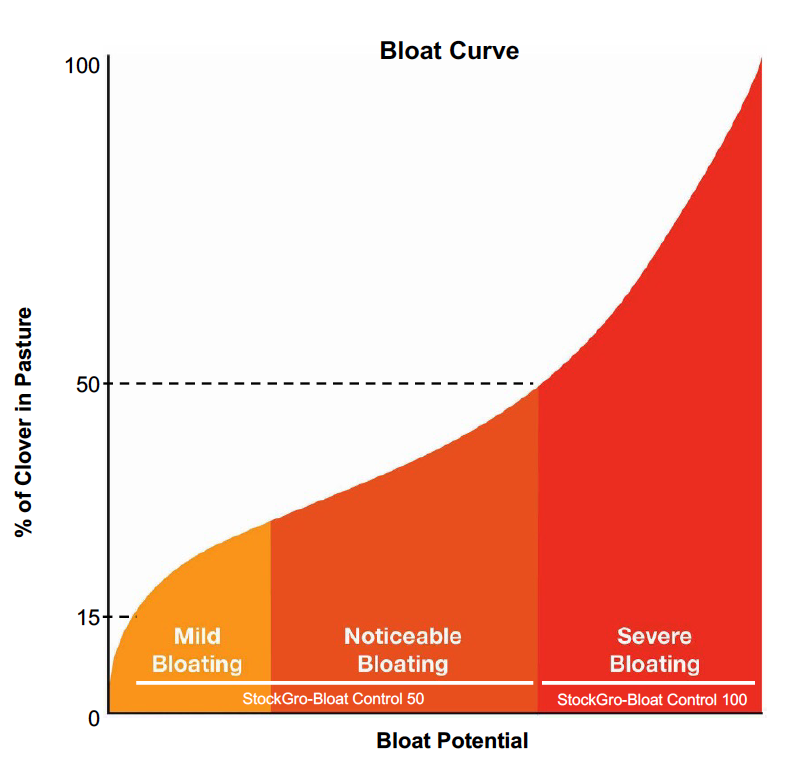Key Points
- Grass Tetany is likely to be a concern this winter, especially if further rainfall events occur
- Supplementary feeding hay or silage and a high magnesium supplement can help reduce the risk
- Frothy Bloat will likely be a concern in late winter or early spring
- Measure, monitor and manage pasture clover cover
- StockGro-Bloat Control is an effective tool for preventing and alleviating bloat in cattle.
The good drop of rain received last week will hopefully be a sign of more to come, and kickstart pasture growth in the southern states before we get into the heart of winter.
However, don’t forget that growing grass in winter can also cause problems for livestock. The two big risks if we get flush pasture growth during winter are Grass Tetany and Bloat. Below we estimate the likelihood, assess why and offer management advice.
Grass Tetany (Hypomagnesemia)
Likelihood: High
Why would Grass Tetany be a concern this winter?
A high requirement for essential minerals and trace elements during lactation, especially magnesium (Mg), is magnified by low magnesium and high potassium (K) levels in emerging winter pasture, especially after a dry spell.
How to manage Grass Tetany this winter?
Although any green pick coming through after the rain can replace supplementary feeding (e.g. hay or silage), we would advise against completely pulling back on supplementary feed until the pasture is well established, as it can dilute K levels and provide additional Mg.
Additionally, we recommend providing animals with an effective high Mg supplement like StockGro-HiMag or StockMins-BoviMag that can satisfy essential mineral, vitamin and trace element requirements and best support lactating cows and their calves.
Frothy Bloat
Likelihood: Medium in early winter. High in late winter and spring
Why would Bloat be a concern this winter?
A combination of reduced ground cover on the back of the recent dry spell and expected warmer winter temperatures, with the odd sunny day, may see clover jump up and quickly establish as the dominant feed in winter paddocks.

How to manage Bloat this winter?
Observation of pasture growth and species is one of the most effective management tools. We suggest using the following method:
Measure: Assess current clover cover of the pasture. If the clover cover is <25% bloat risk is mild, if 25%-50% the risk is high and if >50% risk is severe.
Monitor: Regularly assess the clover cover of the pasture as it can change rapidly, especially after rain events or warm sunny days.
Manage: Move at risk livestock to a lower risk paddock, especially young naïve cattle. Where grazing clover is unavoidable, we recommend offering StockGro-Bloat Control to help prevent and alleviate the build-up of bubbles within the rumen and hay that can dilute the clover portion of the diet.
At AusFarm Nutrition Products we live ruminant nutrition every day. Over the past 45 years of farm visits, consultation and continual education, there is very little that our nutritionists have not seen. Contact our team to discuss reducing the risk of your winter grazing today.